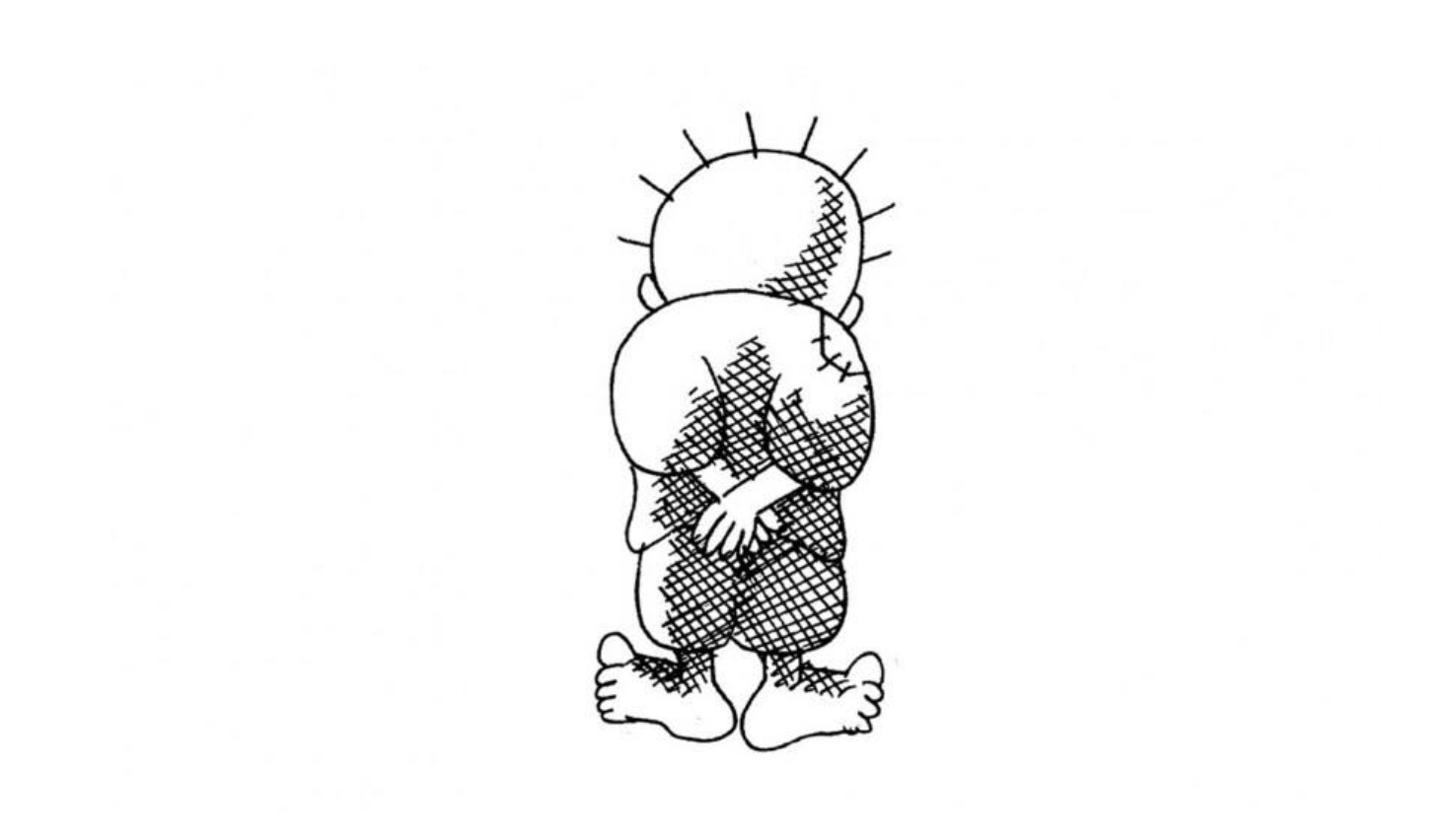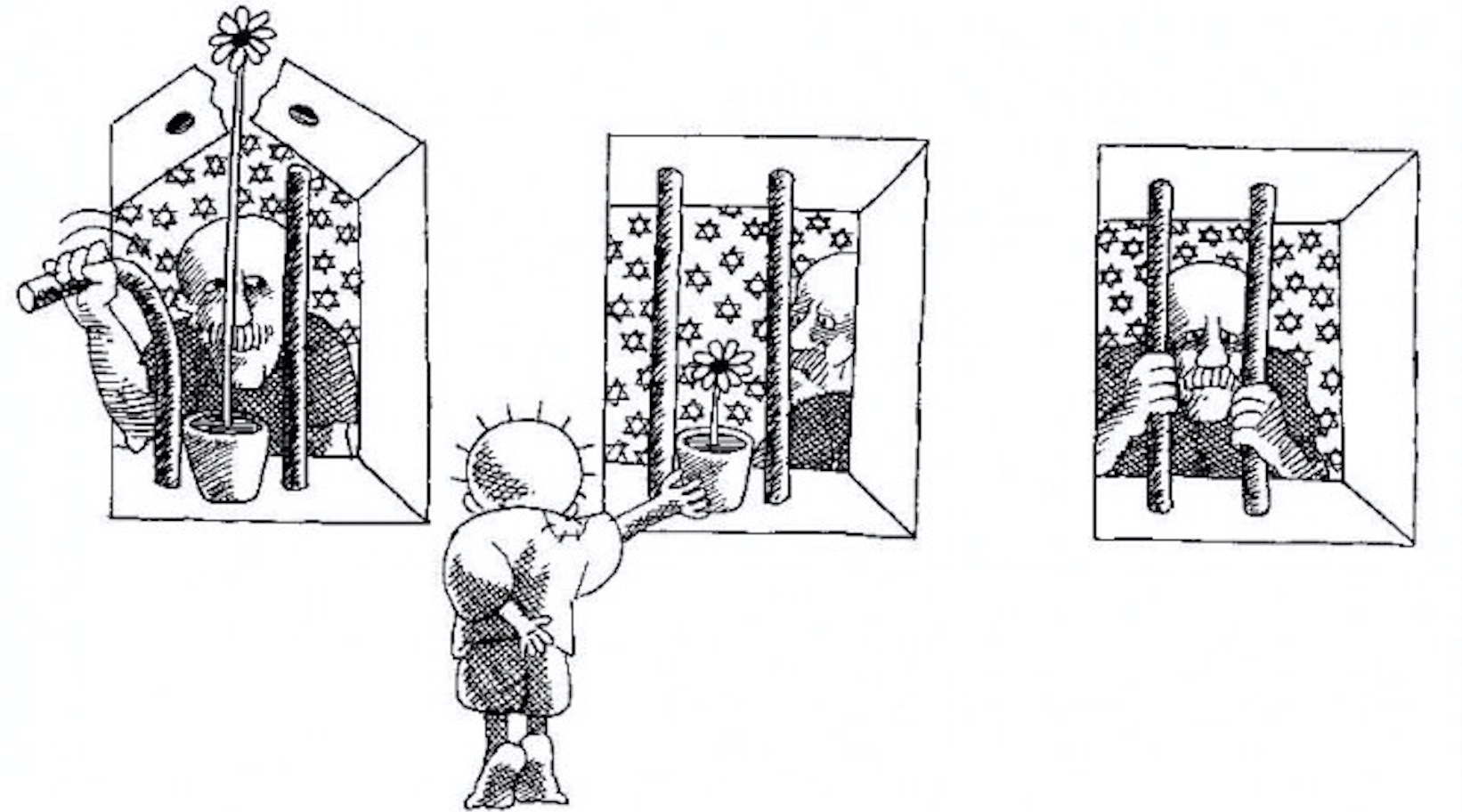A Palestinian activist and cartoonist whose work was revered throughout the Arab region for its boldness, outspokenness, and humanity, Naji al-Ali was one of the most influential Arab artists in mid-twentieth century.
In 1969, al-Ali drew a cartoon of a young boy who has lived on to become Palestine’s pictorial conscience. He was murdered in 1987, but his work survives him until today as symbols to the Palestinian cause.
Al-Ali was born in 1938 in al-Sharja village in Palestine, one of the 480 villages later destroyed in the Nakba (catastrophe) that took place in 1948 to create the state of Israel. At ten years old — in 1948 — al-Ali was among the 750,000 Palestinians who were forced to flee their villages and hometowns. His family fled to southern Lebanon to the Ayn al-Hilwa refugee camp, which is where his artistic talent emerged.
Today, there are no traces of al-Sharja village, as it was replaced by an Israeli settlement called Ilaniya.
In 1960, al-Ali briefly enrolled in the Lebanese Academy of Fine Arts, until he was detained and imprisoned by the Deuxième Bureau (the Lebanese intelligence service) for his political activities in the Palestinian refugee camp. His first drawings were on the prison walls in Lebanon — a form of political expression.
Palestinian author and journalist Ghassan Kanfani was the first to publish al-Ali’s drawings in al-Hurriyya magazine in 1962. From that point onward, his drawings occasionally appeared in the magazine.
He moved on to working as a journalist in several newspapers, including Al-Safir in Lebanon and Al-Tali’a and Al-Siyasa in Kuwait. The cartoonist’s work was quickly recognized, and from 1963 until his murder, his art was featured in newspapers across the Middle East.
Al-Ali’s most famous work was Handala, a young refugee boy always appearing with his back turned and his hands clasped. The child in his drawing is barefoot, like most children in refugee camps, and his hands behind his back are a symbol of rejection — of protest against the world’s complicity in the occupation of Palestine.
“The character of Handala was a sort of icon that protected my soul from falling whenever I felt sluggish or I was ignoring my duty,” al-Ali told Egyptian novelist Radwa Ashour in a conversation on his book, a Child in Palestine: The Cartoons of Naji al-Ali (2009).
“That child was like a splash of freshwater on my forehead, bringing me to attention and keeping me from error and loss.”
Handala was the arrow of the compass, pointing steadily towards Palestine, not only in geographical terms, but Palestine in its humanitarian sense — the symbol of a just cause, whether it is located in Egypt, Vietnam, or South Africa.
“The child Handala is my signature, everyone asks me about him wherever I go. I gave birth to this child in the Gulf and I presented him to the people. His name is Handala and he has promised the people that he will remain true to himself,” al-Ali noted.
In the cartoonist’s vision, Handala was a 10-year-old boy — the same age al-Ali was when he was expelled from Palestine — and will forever remain 10 years old, never growing up until he is able to return to his original homeland. Al-Ali never returned, and Handala remained a symbol of Palestinian defiance.
“I drew him as a child who is not beautiful; his hair is like the hair of a hedgehog that uses his thorns as a weapon,” al-Ali said, adding that “Handala is not a fat, happy, relaxed, or pampered child, he is barefooted like the refugee camp children, and he is an ‘icon’ that protects me from making mistakes. Even though he is rough, he smells of amber.”
At a time when “solutions [were] presented to us the American way,” al-Ali viewed Handala’s clasped hands behind his back as “a sign of rejection.”
Al-Ali’s work remains a source of inspiration and a reminder of the persistent struggle in the region. Egypt paid homage to al-Ali in the 1992 film ‘Nagi al-Ali’ starring late Egyptian actor Nour al-Sherif and directed by Atef al-Tayeb. Iraqi filmmaker Kasim Abid produced a documentary ‘Naji Al-Ali: Artist with Vision’ in 1999 as a tribute to his legacy.
Ali-Ali’s perseverance and resistance led him to receive various death threats, until he was murdered on his way to the England-based Kuwaiti newspaper Al-Qabas in London. Thirty-six years after his passing, al-Ali’s shooter remains unknown.
“His death is a very stark image of the pen versus the sword,” Jonathan Guyer, an expert on Arab comics at the Radcliffe Institute for Advanced Study at Harvard explained to the New York Times.
“Naji al-Ali is seen as an actual case in which a cartoonist was gunned down because he was a dissenter.”









Comments (5)
[…] artists create new patterns to capture current moments in history, embroidering motifs such as Handala or the watermelon. Handala, a drawing of a refugee with his hands clasped behind his back, is a […]
[…] post How Naji al-Ali’s Cartoon ‘Handala’ Became an Emblem of Palestinian Resistance first appeared on Egyptian […]